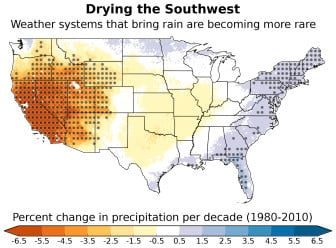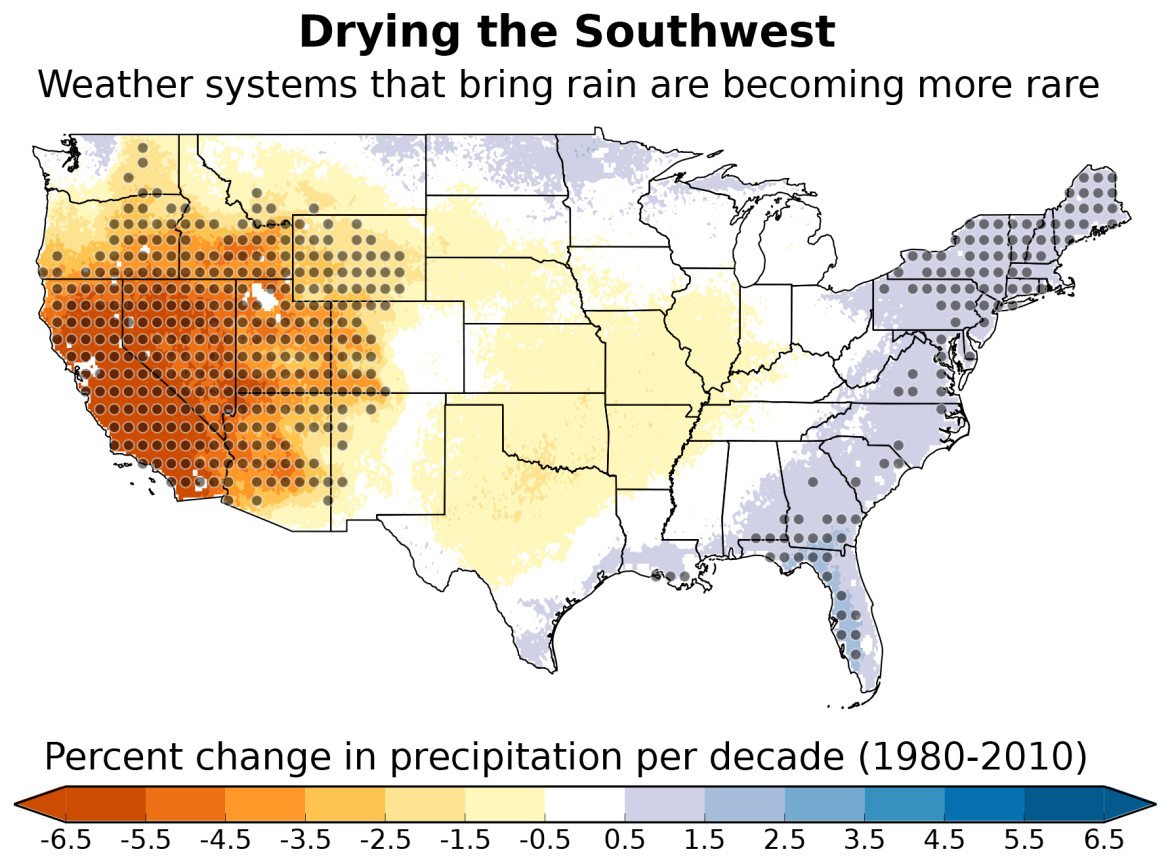
Weather systems that typically bring moisture to the southwestern United States are forming less often, resulting in a drier climate across the region. This map depicts the portion of overall changes in precipitation across the United States that can be attributed to these changes in weather system frequency. The gray dots represent areas where the results are statistically significant. (Map courtesy of Andreas Prein, NCAR. )
This winter has been—let’s just say it—a blessing for New Mexico’s mountains and rivers. El Niño has pushed moisture our way that has skiers and forecasters alike smiling.
But don’t take that moisture for granted.
On Friday, the AP ran a news story about a new study, titled “Running dry: The US southwest’s drift into a drier climate state.”
In it, reporters Scott Sonner and Seth Borenstein write: “The southwestern United States has already begun a long-predicted shift into a decidedly drier climate, a new study looking at the last 35 years of weather pattern concluded.”
So, let’s look a little closer at that study, which was published in Geophysical Research Letters.
Researchers studied 35 years’ worth of data to identify common weather patterns, identified 12 patterns that are common within the United States, and then tried to see if those patterns were becoming more or less frequent.
According to the press release from the National Center for Atmospheric Research, where the authors are based:
“The weather types that are becoming more rare are the ones that bring a lot of rain to the southwestern United States,” Prein said. “Because only a few weather patterns bring precipitation to the Southwest, those changes have a dramatic impact.”
The Southwest is especially vulnerable to any additional drying. The region, already the most arid in the country, is home to a quickly growing population that is putting tremendous stress on its limited water resources.
In the study’s conclusion, the authors note:
Projected changes of a poleward extension of the subtropical dry zones simulated by climate models and the corresponding decrease of precipitation in the U.S. Southwest have not been found in observations to date because of the large natural climate variability. Assigning precipitation trends to changes in (weather type) frequencies reveals this process in observational data sets because it filters out the majority of variability in annual precipitation time series. This indicate that a transient drift of the Southwest’s climate into a drier state has already started.
In other words?
Yes, the weather here is variable. There will be wet years and dry years. But on the whole, the region’s climate has already become drier than it was in the 1970s.
The National Center for Atmospheric Research is managed by the University Corporation for Atmospheric Research, a consortium of about 100 colleges and universities. It receives most of its funding from the federal government.
To read the study for yourself: http://onlinelibrary.wiley.com/doi/10.1002/2015GL066727/full
